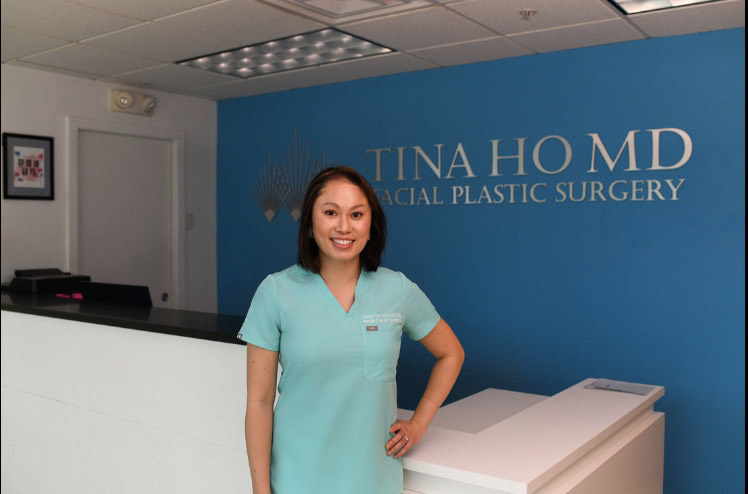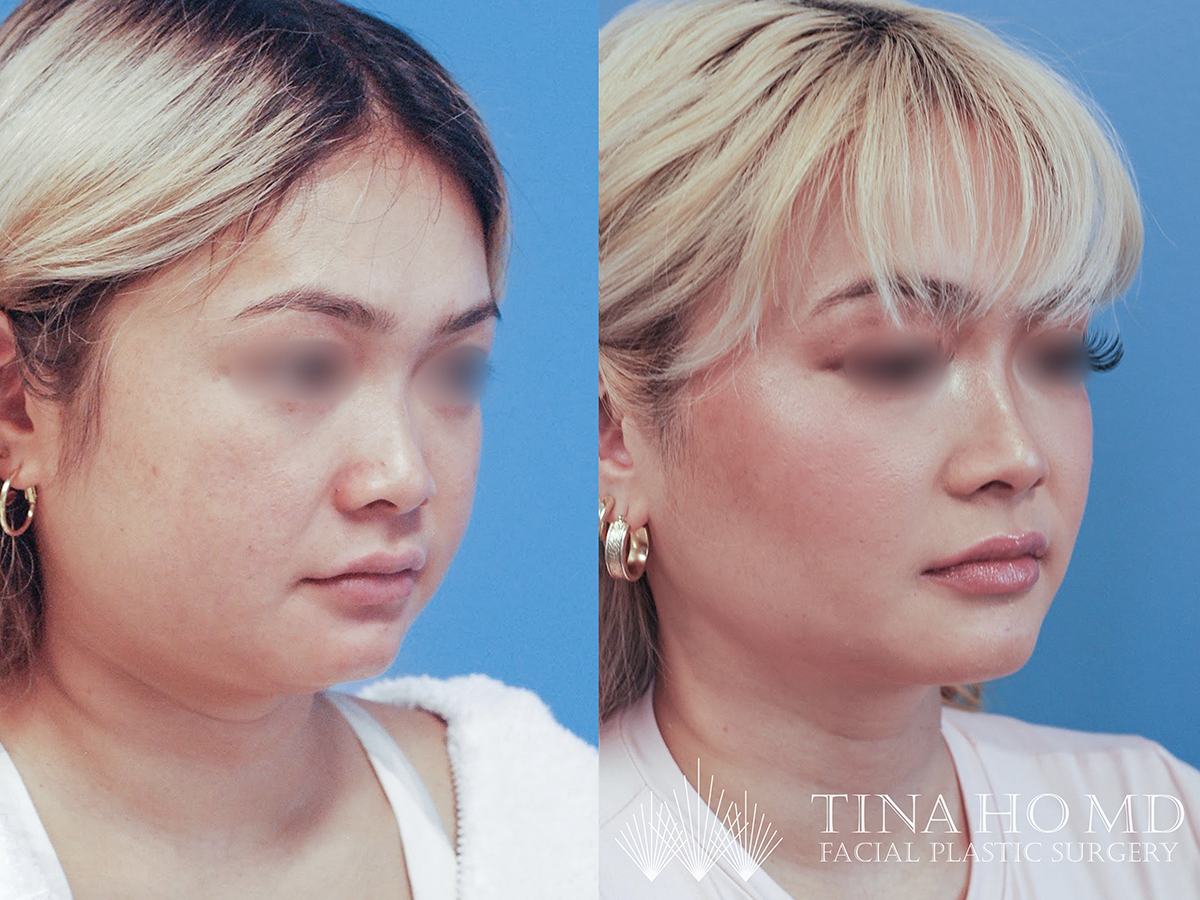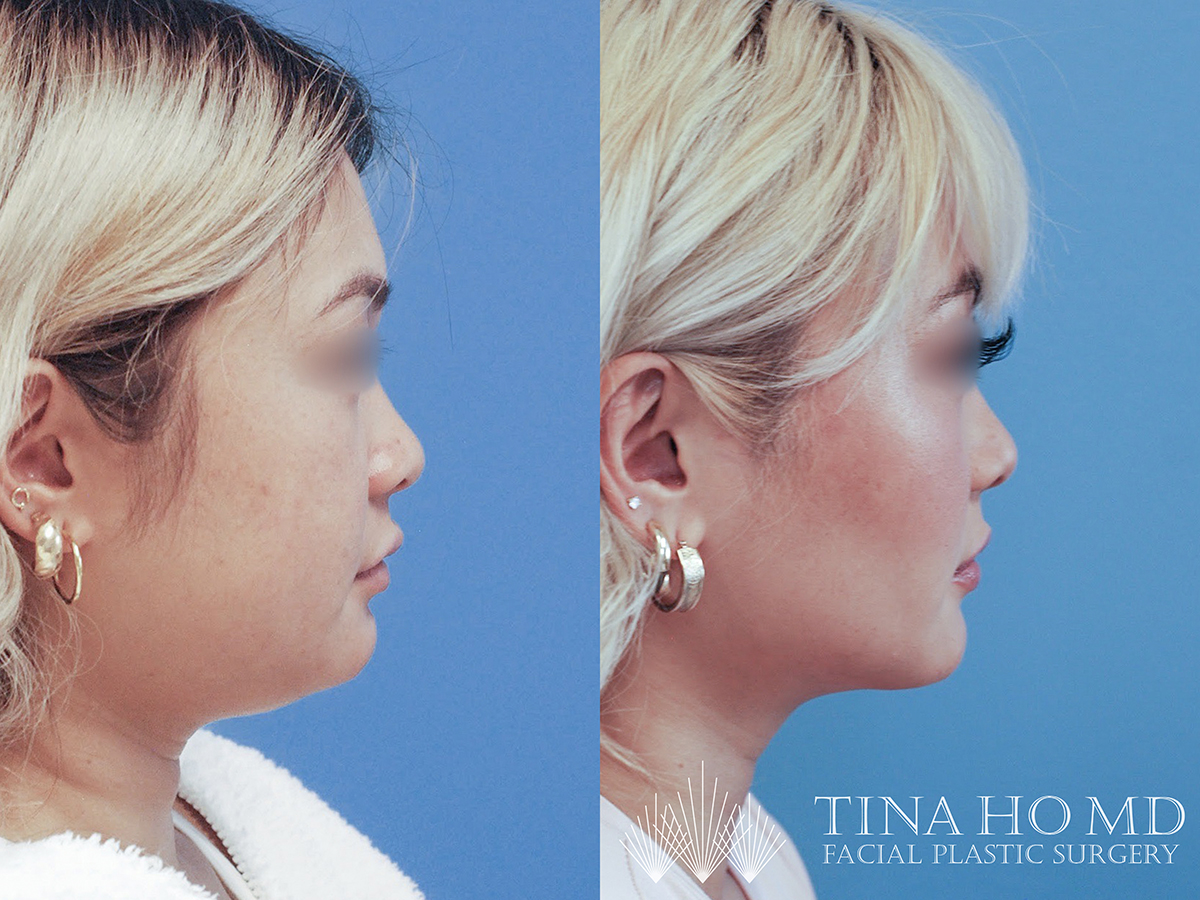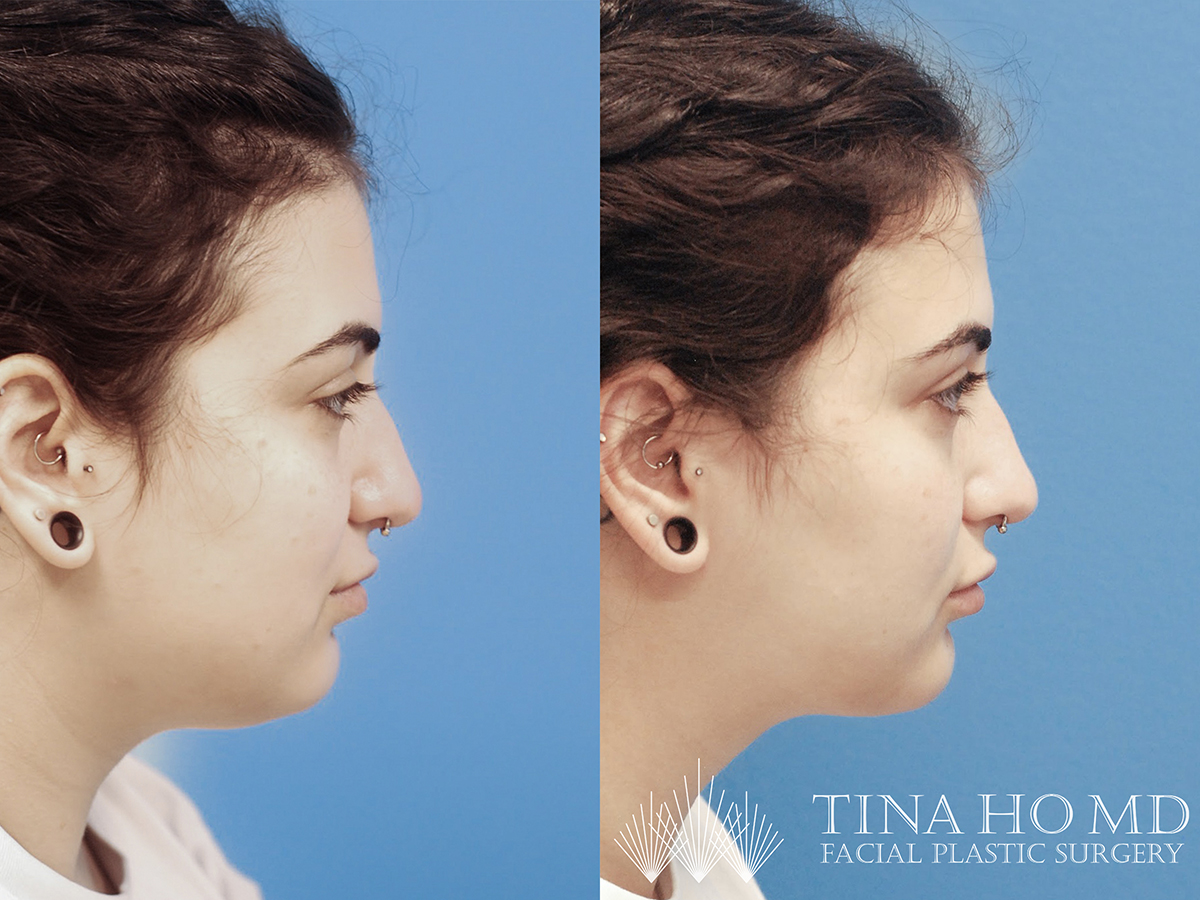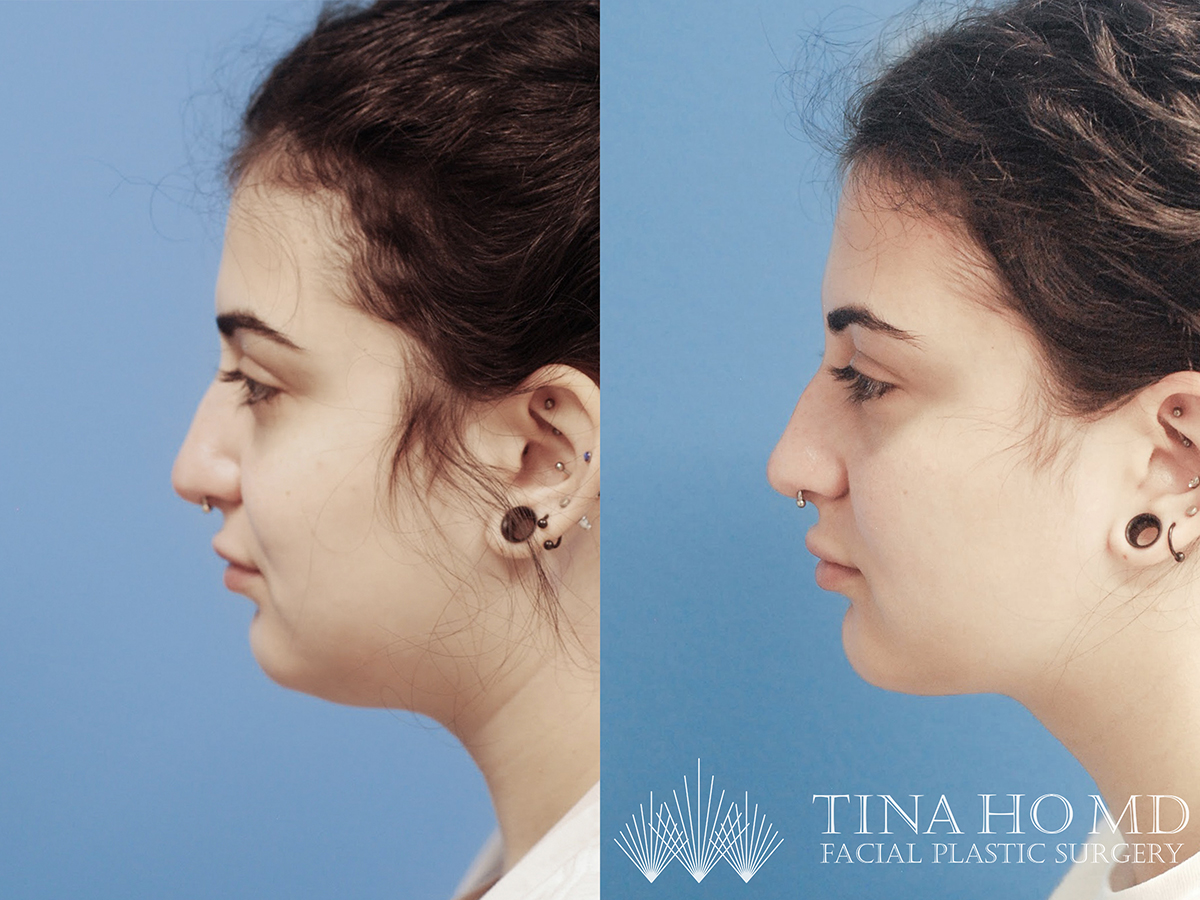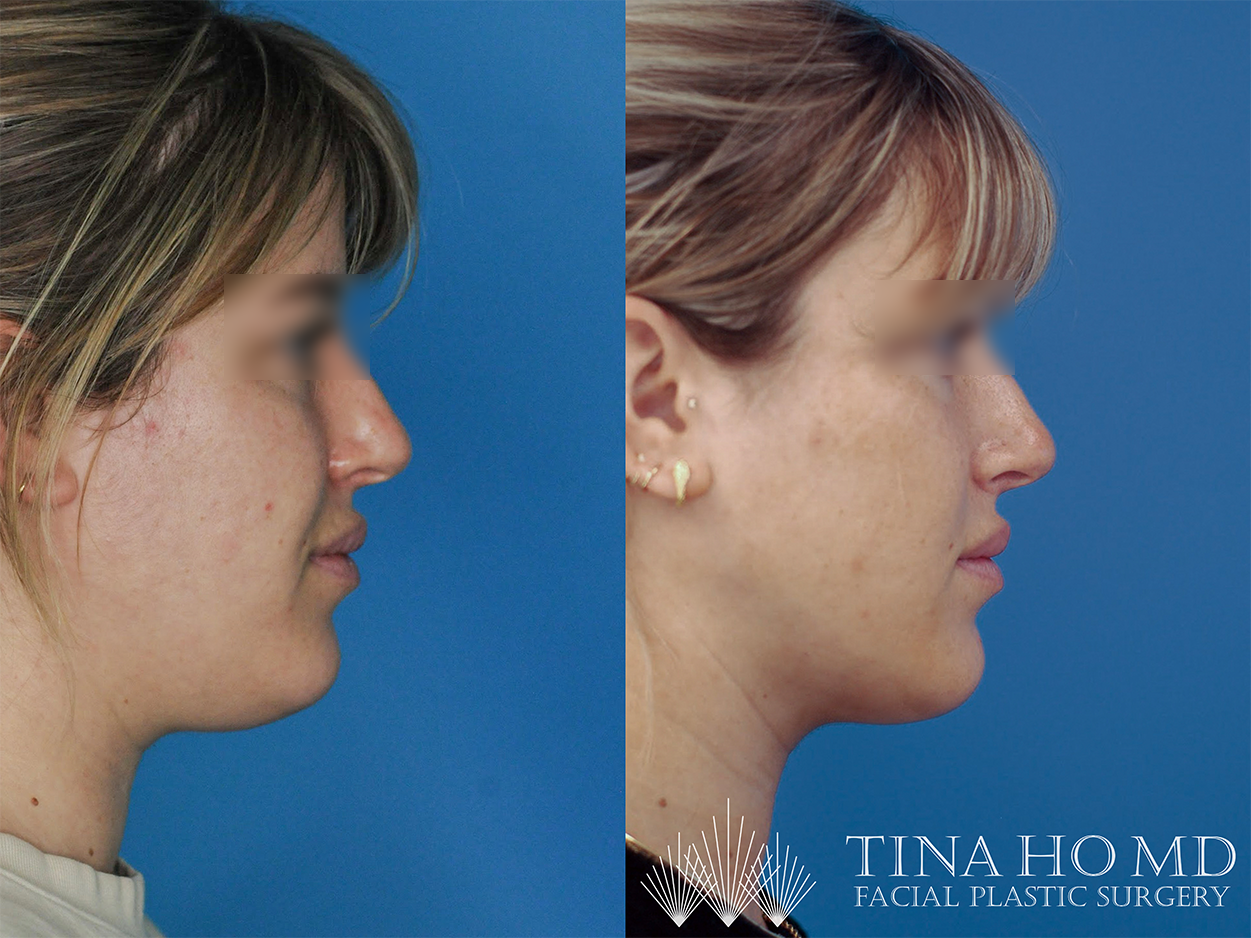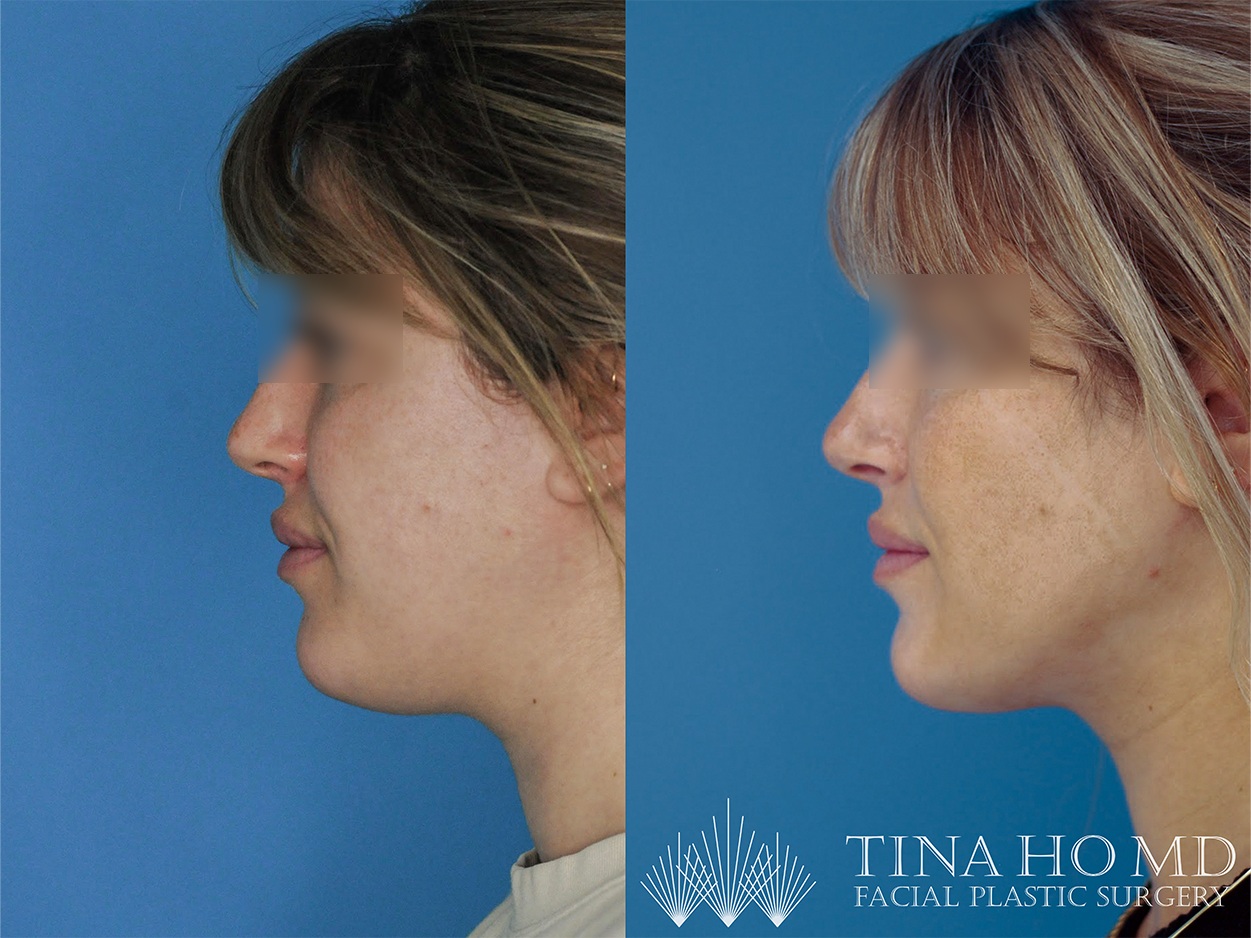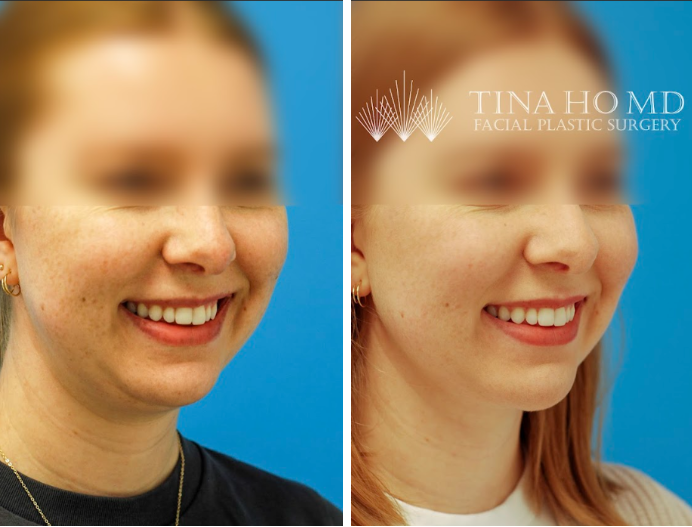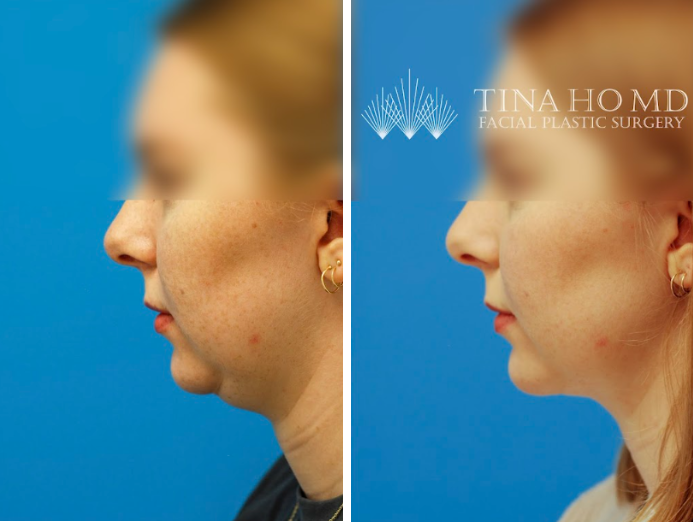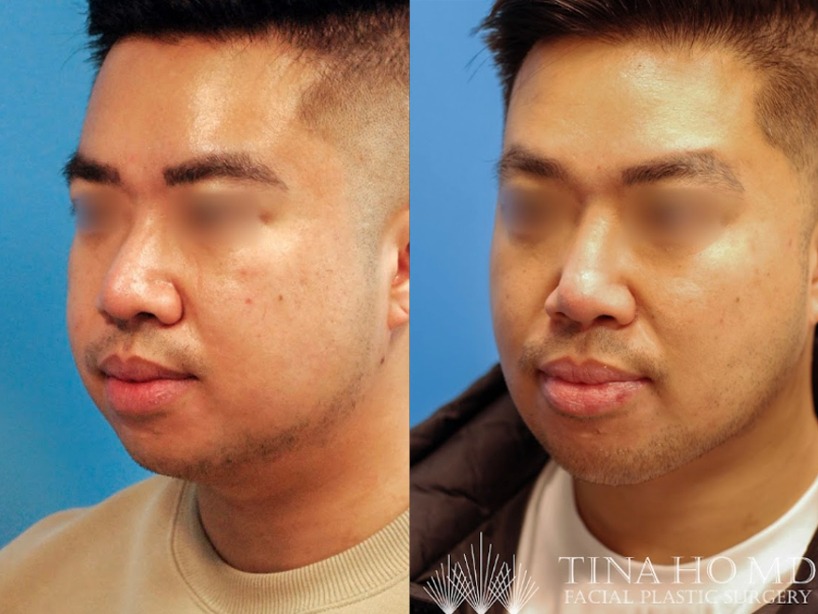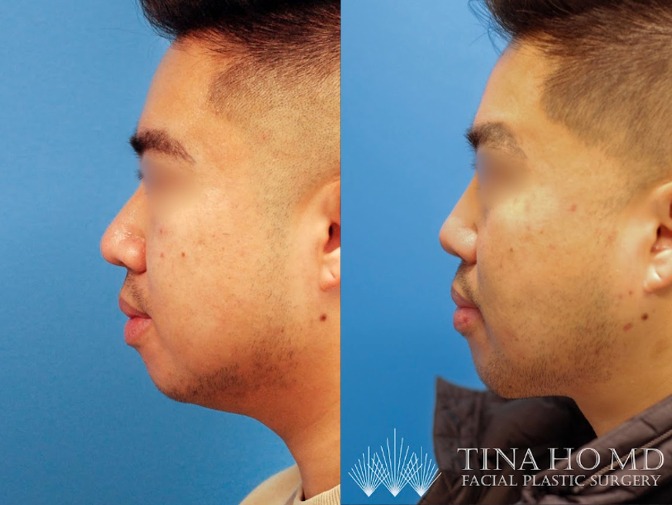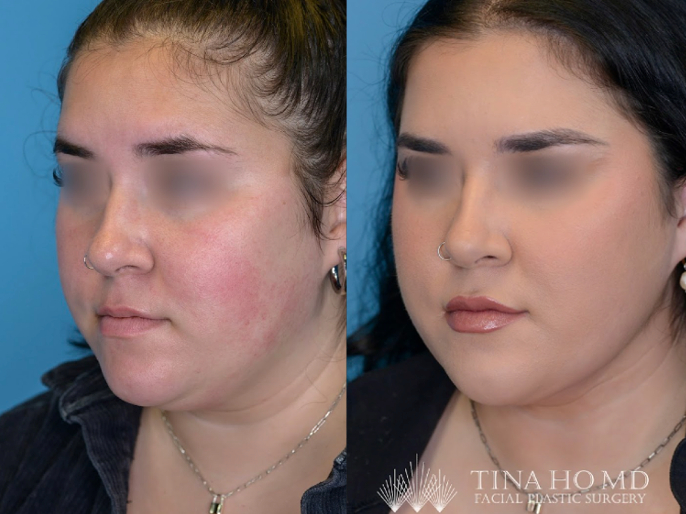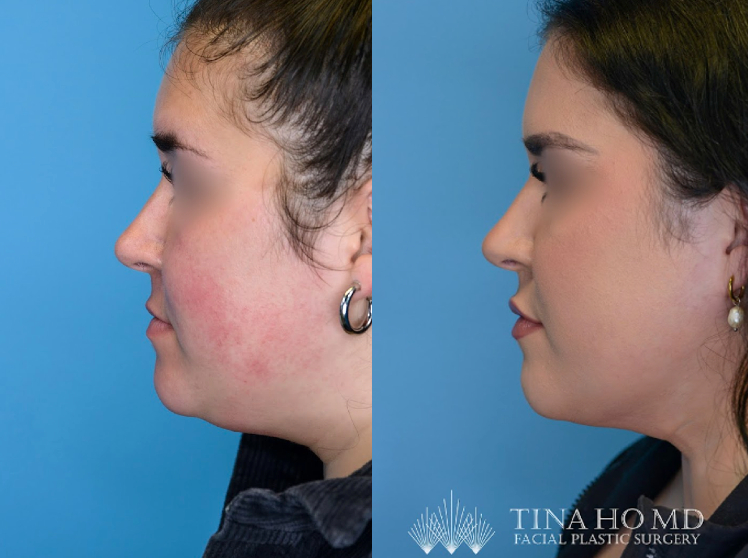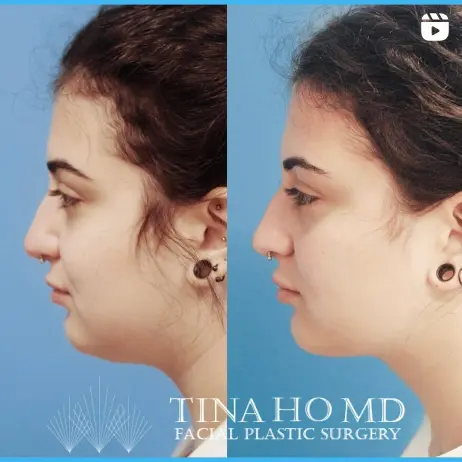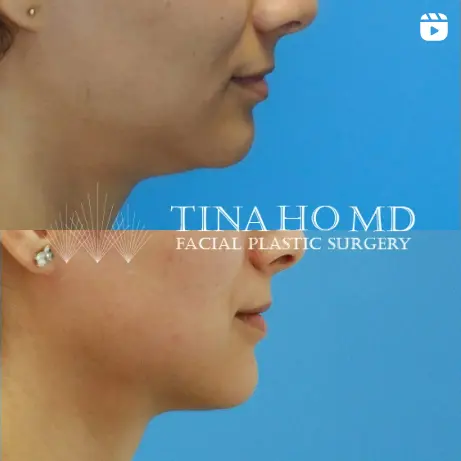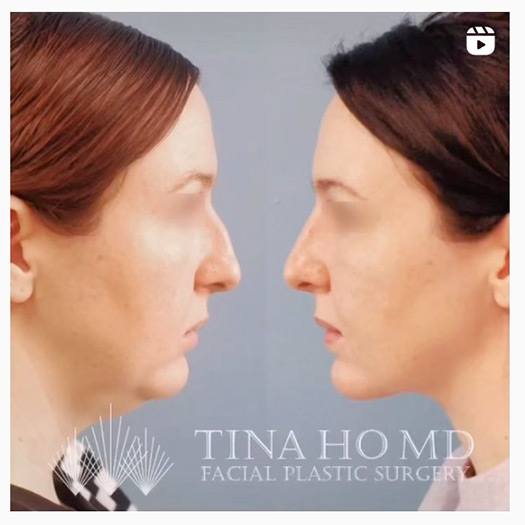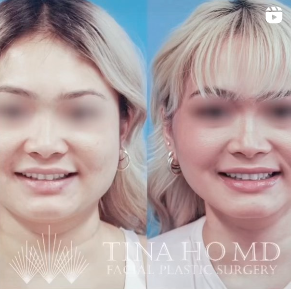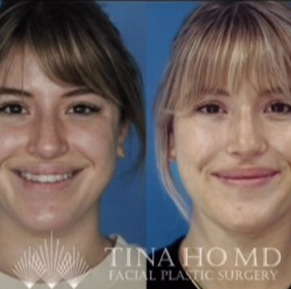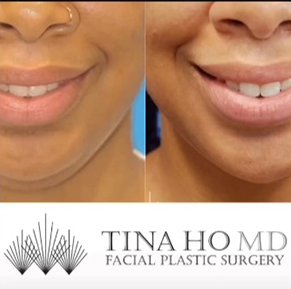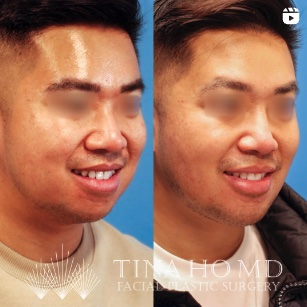Table of Contents
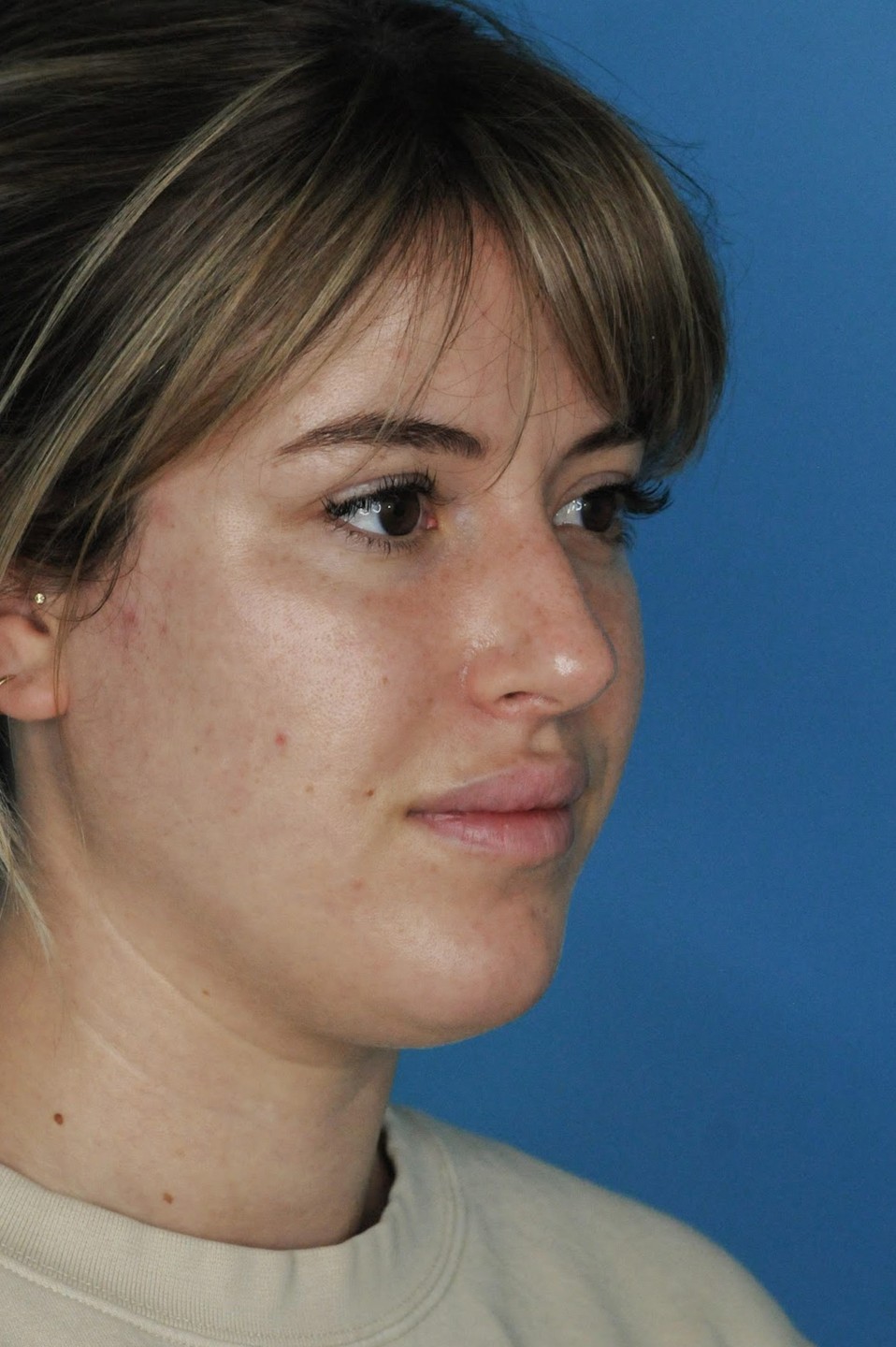
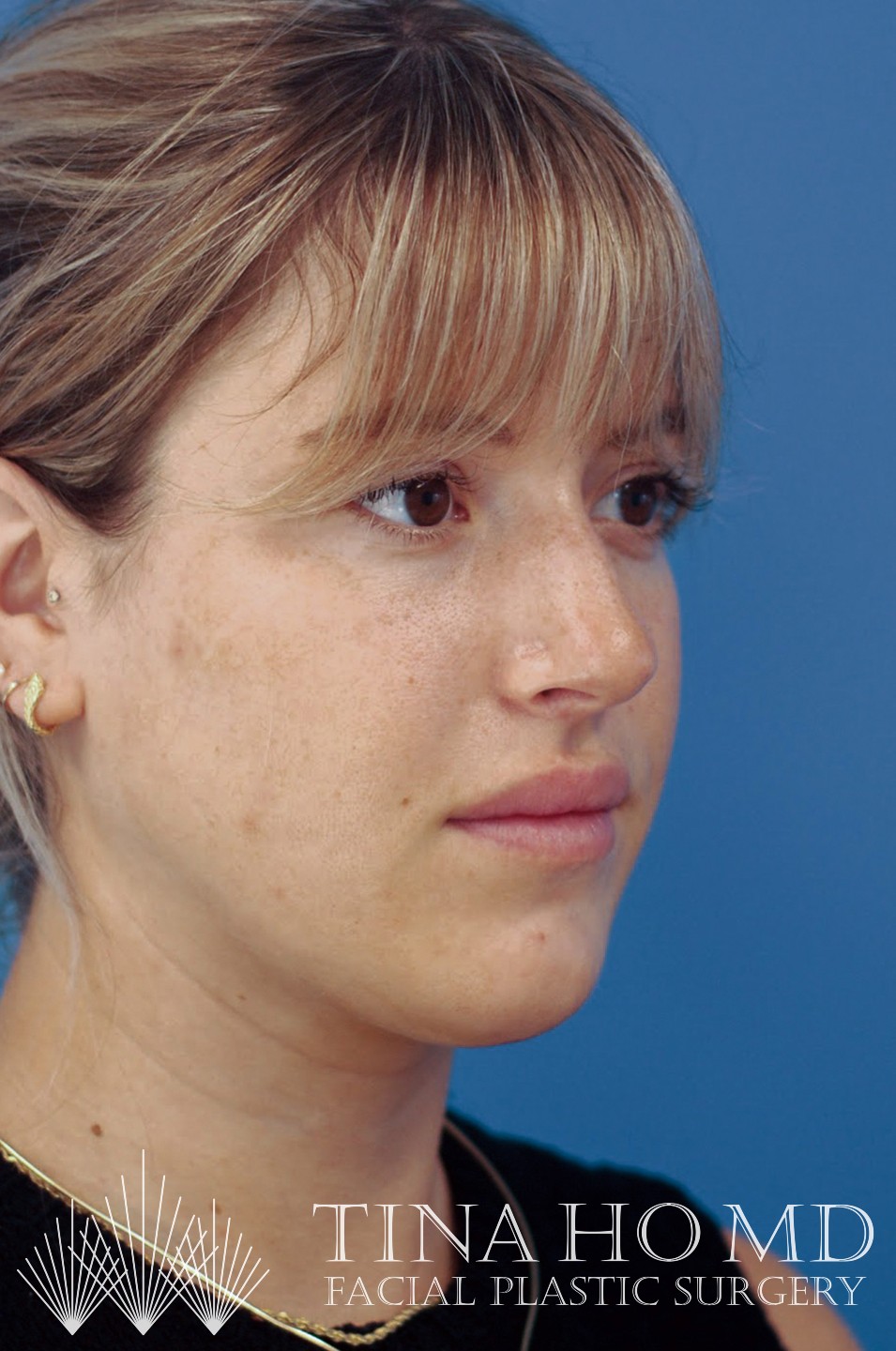
Before & Afters
View Gallery
What is Neck Liposuction
Chin or neck liposuction can also be referred to as submental liposuction. Submental liposuction is the most medical term for the surgical procedure, with submental referring to the area of the anterior and upper neck that is immediately below the chin. The submental region can also be defined as the space between the chin and neck. Although liposuction is not typically performed in the chin itself, it can span beyond the submental area posteriorly along the jawline including the jowls and inferiorly in the neck to optimize chin, jawline, and neck contour results.
This surgery addresses bulky, superficial fat that’s typically local in the area underneath the chin or in the upper neck.
Book Now
Chin/Neck Liposuction Results
BEFORE & AFTER PHOTOS
Educational Videos
Submental Liposuction: Who is the Ideal Candidate

The ideal candidate for neck and chin liposuction tends to only have bulky, superficial fat just below the skin and underneath the chin or in the upper neck. Some chin liposuction candidates maybe be seeking to remove their double chin, while others are hoping to refine their jawline. Candidates for this procedure are also interested in more pronounced and permanent results compared to some non-surgical options that be more subtle and temporary.
If the patient has skin laxity or they have bulk in the deeper structures in the neck like the platysma or digastric region of the neck, those are likely candidates for a neck lift instead. If they prefer to do liposuction anyway, it could result in a more conservative result, or potentially a concerning result like a Turkey Neck appearance.
Kybella is an alternative to liposuction, but this is more of a procedure for patients who prefer a one-and-done approach to achieving results.
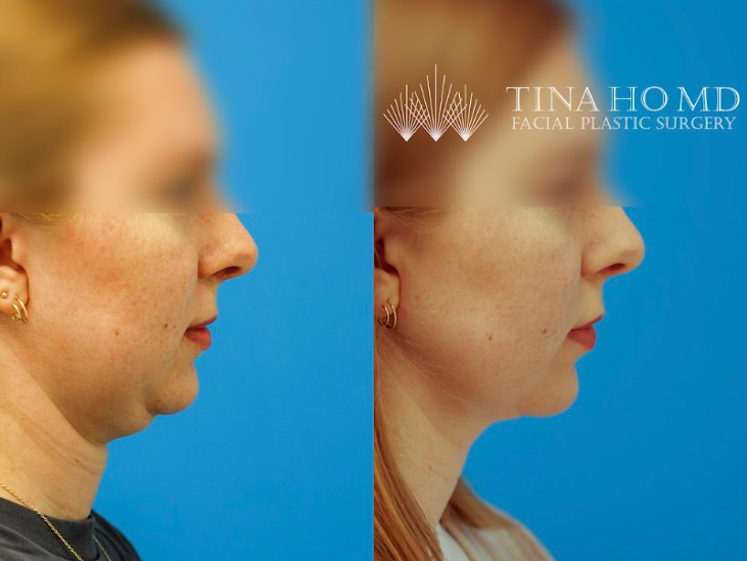
The Chin and Neck Liposuction Consultation
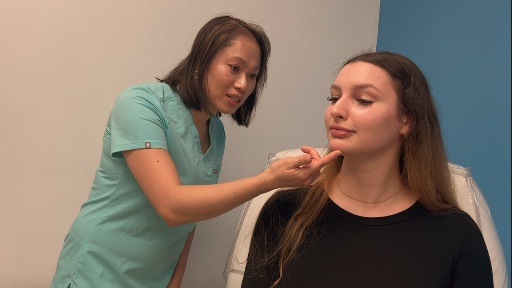
The first step in your neck liposuction journey is scheduling an initial consultation with double board-certified facial plastic surgeon, Dr. Tina Ho.
During this consultation, Dr. Ho will assess your neck and jawline, discuss your goals and expectations, and determine your candidacy for the procedure. It is crucial to provide your complete medical history, including previous surgeries, allergies, and current medications or supplements, to ensure a safe and successful procedure.
Once you are deemed a suitable candidate for neck liposuction, the surgical coordinator will schedule your day of surgery and provide you with pre-operative instructions to follow. These may include:
- Discontinuing certain medications such as blood thinners can increase the risk of bleeding.
- Ceasing smoking, as it can impair the healing process.
- Making arrangements for the surgery, either under local anesthesia in the office setting or under sedation/general anesthesia in a surgical facility.
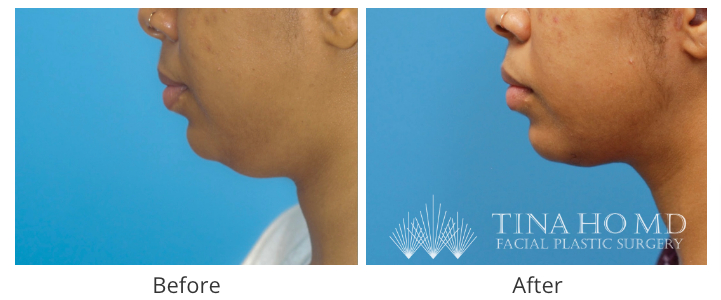
Dr. Tina Ho’s Approach to Submental Liposuction
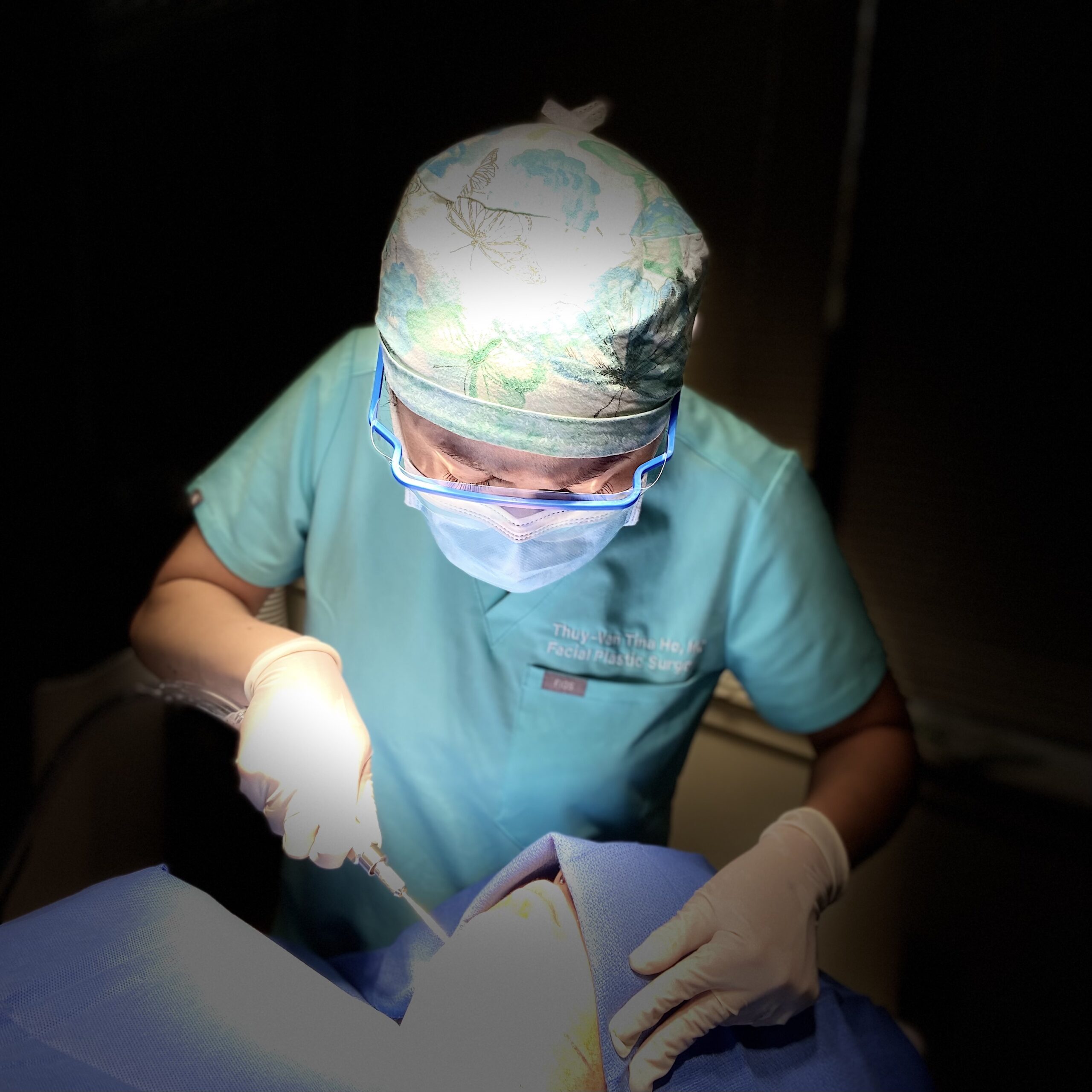
As a fellowship-trained surgeon, Dr. Ho possess dedicated training in chin or neck liposuction surgery. Each procedure is uniquely planned and executed according to the anatomic features and treatment goals of the individual patient.
Neck and chin liposuction can be done under local anesthesia in the office setting, similar to undergoing a dental procedure. Alternatively, patients who prefer not to be awake can elect to have the surgery performed under sedation or general anesthesia for those.
On the day of the procedure, Dr. Tina Ho will begin by injecting a numbing solution or tumescent anesthesia into the targeted area to both numb the area and minimize bleeding. She then makes just a small incision, no more than a centimeter, in a crease underneath the chin. She often places additional incisions in the earlobe creases. These additional incisions allow more lateral access to really enhance the contouring and lateral reduction of the fat. This helps accentuate the jaw bone.
Once she makes the incision, she places liposuction cannulas through the incisions under the skin and then passes these cannulas back and forth until the area reduces smoothly and we see a nice improvement in the upper neck contour.
Neck liposuction may not be the most technical of the facial procedures, but it does require tedious attention and effort. Because of this, Dr. Ho really takes her time with the process to make sure she’s getting a nice, even reduction. Her goal is optimal results over expediency.
I may additionally perform an adjunct skin resurfacing procedure afterward to further tighten and contract the skin and optimize the surgical outcome.
One trick to improving results is to use smaller cannulas for increased precision.
Afterward, stitches are placed in the wounds and then a compression dressing is applied.
Submental Neck Lift Recovery
The patient does need to ice when they can in the first 48 hours. This is when the majority of the bruising and swelling kicks into place. Patients may benefit from a soft diet in the first week because of soreness around the mouth. Limiting anything that causes the mouth to open wide during the first few days is preferred.
Dr. Ho typically instructs patients to avoid exercise such as heavy lifting for two weeks and to keep their head elevated for the first week as well.
At the first visit, which is usually one week out, Dr. Ho will remove the stitches and take the first post-operative photos. A lot of the swelling and bruising resolves within the first couple of weeks for the average patient.
After a month, the swelling from the surgery should be gone. It is during this time when patients should be recovered enough to go to big social events, like a wedding or so.
The final results should be seen around three to six months after surgery.
Combining a Neck Lift with Other Procedures
So liposuction is a component of neck lift. If there are patients who have superficial fat in addition to lax skin, a neck lift would include liposuction in that process.
If the patient could benefit from enhancing the profile with more chin projection, then a chin augmentation with an implant is a great adjunct procedure to combine with chin liposuction.
Some patients are looking to enhance their overall profile and have additional concerns about their nasal appearance. In those cases, a rhinoplasty can be done at the same time.
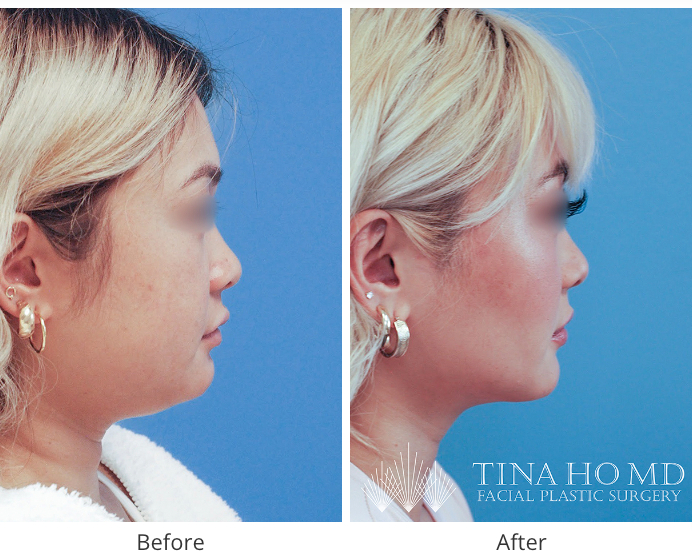
Risks and Side Effects

As with any other cosmetic procedure, submental liposuction may display some side effects after the surgery. Some of the side effects are as follows:
- Swelling and Bruises
- Infection and Temporary Numbness
- Loose Skin
- Bleeding
- Discomfort
- Breathing Problem
- Decreased Skin Sensitivity
- Scarring
Book Now

DR. HO’S LATEST MEDIA FEATURES

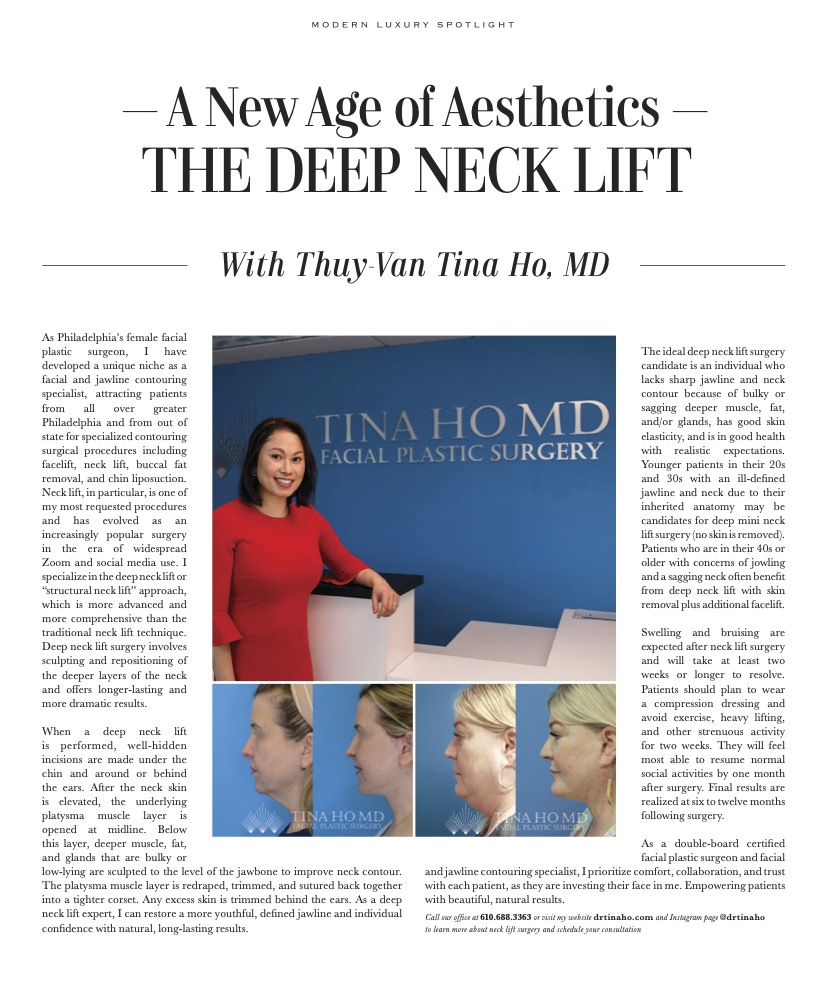
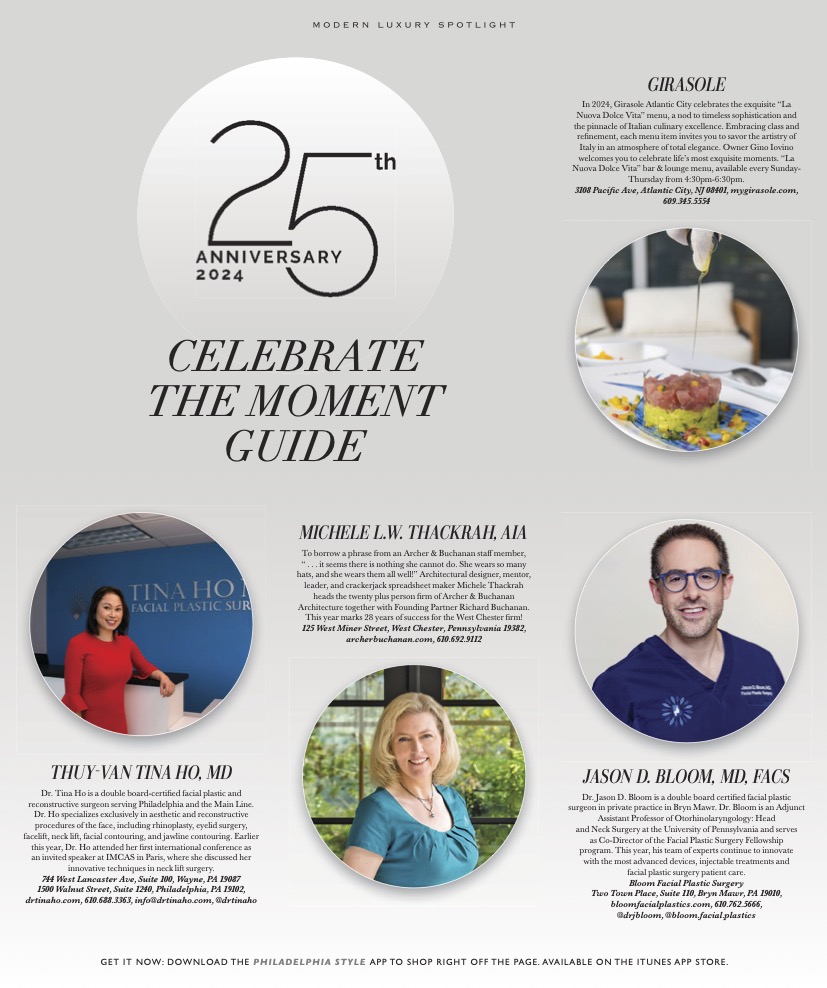
Book Now
FAQ’s
What Is Dr. Ho’s Approach to the Chin/Neck Liposuction?
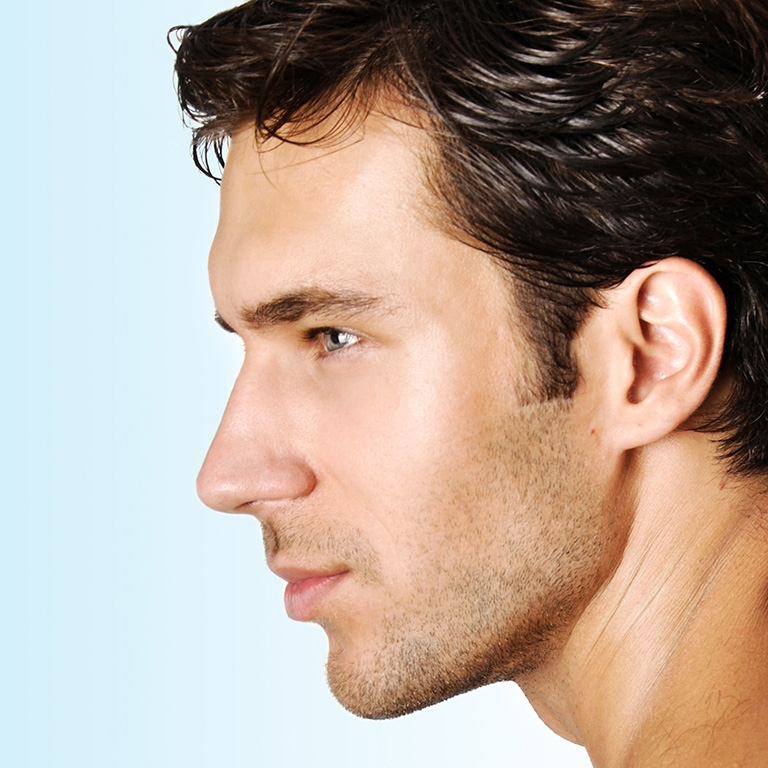 As a facial plastic and reconstructive surgeon, Dr. Ho specializes exclusively in aesthetic and reconstructive procedures of the head and neck region. Dr. Ho is regionally known for her signature procedures in facial contouring and jawline contouring and draws patients from all over Pennsylvania, New Jersey, and New York to Philadelphia and Wayne for chin and neck liposuction. She devotes ample time and effort to establish realistic goals and expectations with every patient. She also routinely performs non-surgical procedures for minimizing submental fat and improving jawline definition and will review with each patient which treatment options will achieve the most ideal results. Dr. Ho believes that chin/neck liposuction is the most definitive treatment option for removing excess fat under the chin and along the upper neck. Her treatment philosophy is centered on producing results that are natural yet still dramatic enough and restore facial harmony.
As a facial plastic and reconstructive surgeon, Dr. Ho specializes exclusively in aesthetic and reconstructive procedures of the head and neck region. Dr. Ho is regionally known for her signature procedures in facial contouring and jawline contouring and draws patients from all over Pennsylvania, New Jersey, and New York to Philadelphia and Wayne for chin and neck liposuction. She devotes ample time and effort to establish realistic goals and expectations with every patient. She also routinely performs non-surgical procedures for minimizing submental fat and improving jawline definition and will review with each patient which treatment options will achieve the most ideal results. Dr. Ho believes that chin/neck liposuction is the most definitive treatment option for removing excess fat under the chin and along the upper neck. Her treatment philosophy is centered on producing results that are natural yet still dramatic enough and restore facial harmony.What Should Patients Expect After Chin/Neck Liposuction?
Every chin or neck liposuction patient will follow up with Dr. Ho one week after surgery for suture removal. Each patient will then follow-up again at weeks to months out at regular intervals for re-evaluation. Patients should expect immediate bruising and swelling after surgery that can be managed well with icing, head elevation, and compression dressing adherence with the majority resolving by one month out from surgery. Residual swelling following this period will continue to improve over the next several months to one year. Post-operative pain is usually managed well with prescribed pain medication. Improvement in the appearance of the chin and upper neck areas is typically observed after most of the bruising and swelling has subsided, with final results requiring six months or longer to take full effect. Dr. Ho seeks regular follow-up with her patients to ensure that every patient heals well and is satisfied with their surgical outcome.
What type of patient is the ideal candidate for a chin/neck liposuction?

The Dedo classification helps guide the plastic surgeon in determining ideal candidates for lower face and neck surgery including submental liposuction, facelift, and chin/neck liposuction and what anatomic issues need to be addressed with surgery. Class I patients possess good skin and muscle tone with little fat and an ideal cervicomental angle. Class II, III, IV, and V patients demonstrate skin laxity, focal fat accumulation, platysmal banding, and weak chin, retrospectively. Class VI patients have an abnormal hyoid position and will likely have suboptimal results with surgery.
What are other procedures that are routinely performed with Chin/Neck Liposuction?
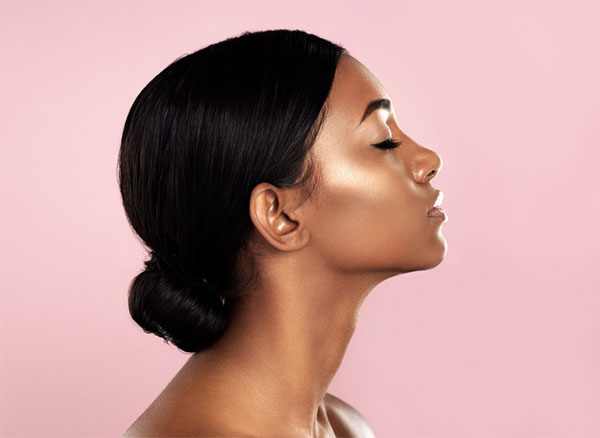
It is common for other surgical procedures to be performed at the same time as chin or neck liposuction, depending on the patient’s anatomic issues and surgical goals. In the younger patient, they may also benefit from additional chin augmentation and skin resurfacing. For the older patient, possible adjunct procedures include but are not limited to the following: facelift, platysma plication, chin augmentation, and skin resurfacing. Dr. Ho often recommends combining chin liposuction with a series of skin resurfacing treatments that will tighten and contract the neck skin and ultimately optimize the surgical outcome. Dr. Ho is experienced in a wide range of facial rejuvenation procedures and will thoroughly evaluate each chin/neck liposuction candidate and discuss with them whether they would benefit from additional procedures at the time of their neck plastic surgery.
Furthermore, It is common for additional non-surgical procedures to be performed after chin or neck liposuction for enhanced jawline contouring, depending on the patient’s anatomic issues and rejuvenation goals. They include but are not limited to the following: filler treatment for jawline and chin augmentation as well as cheek augmentation, neurotoxin masseter injection, and skin resurfacing via radiofrequency, laser, and microneedling modalities. When performing jawline contouring, Dr. Ho also takes into account the anatomy and treatment of the midface region (cheeks and eye areas) to create rejuvenated faces that are aesthetically beautiful and balanced. Dr. Ho is experienced in a wide range of aging face procedures and will thoroughly evaluate each chin/neck liposuction candidate and discuss with them whether they would benefit from additional non-surgical procedures after surgery. To learn more about non-surgical treatment options for jawline contouring, click here.
What is the cost of chin/neck liposuction?
The cost for liposuction of the chin or neck region varies based on each patient’s individual needs. However, pricing starts at $5,000-$8,000 including facility and anesthesia fees. It’s also good to know CareCredit financing options are available.
Contact our Philadelphia location for more pricing details.
What is the ideal jawline?
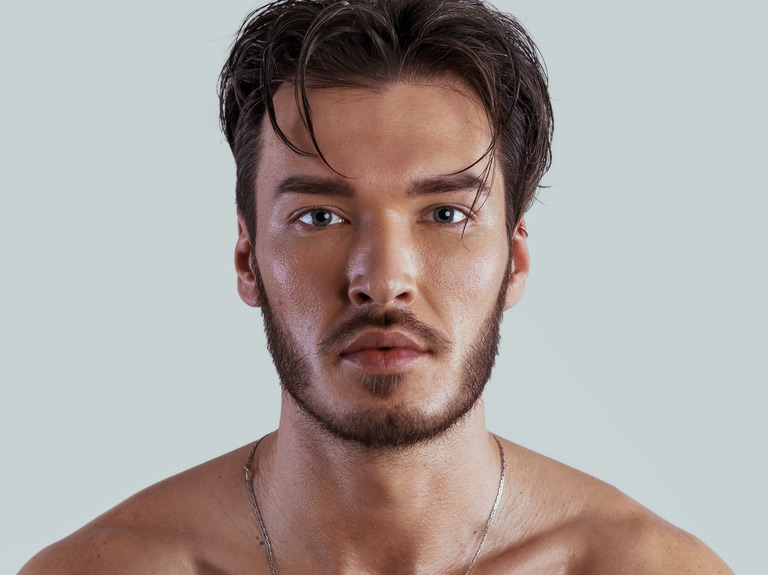

In an ideal female face, the lower third of the face including the jawline is narrower compared to the upper two thirds and follows the optimal inverted pyramid shape. In an ideal male face, the lower third of the face including the jawline demonstrates a more square appearance.
Dr. Ho believes that while every face is unique, the ideal jawline possesses a youthful, sharp definition and is harmonious with the rest of the face. In an ideal female face, the lower third of the face including the jawline is more narrow and tapered compared to the upper two thirds and contributes to the optimal inverted pyramid shape. In an ideal male face, the lower third of the face including the jawline follows a more square appearance. Furthermore, the ideal jawline demonstrates adequate chin projection as well. The most anterior point of an ideal chin should be at or approach a vertical line referred to as the Zero Meridian of Gonzalez-Ulloa that runs through the nasion (root of the nose) and is perpendicular to the Frankfort horizontal line, which runs through the inferior orbital rim and superior limit of the ear canal.
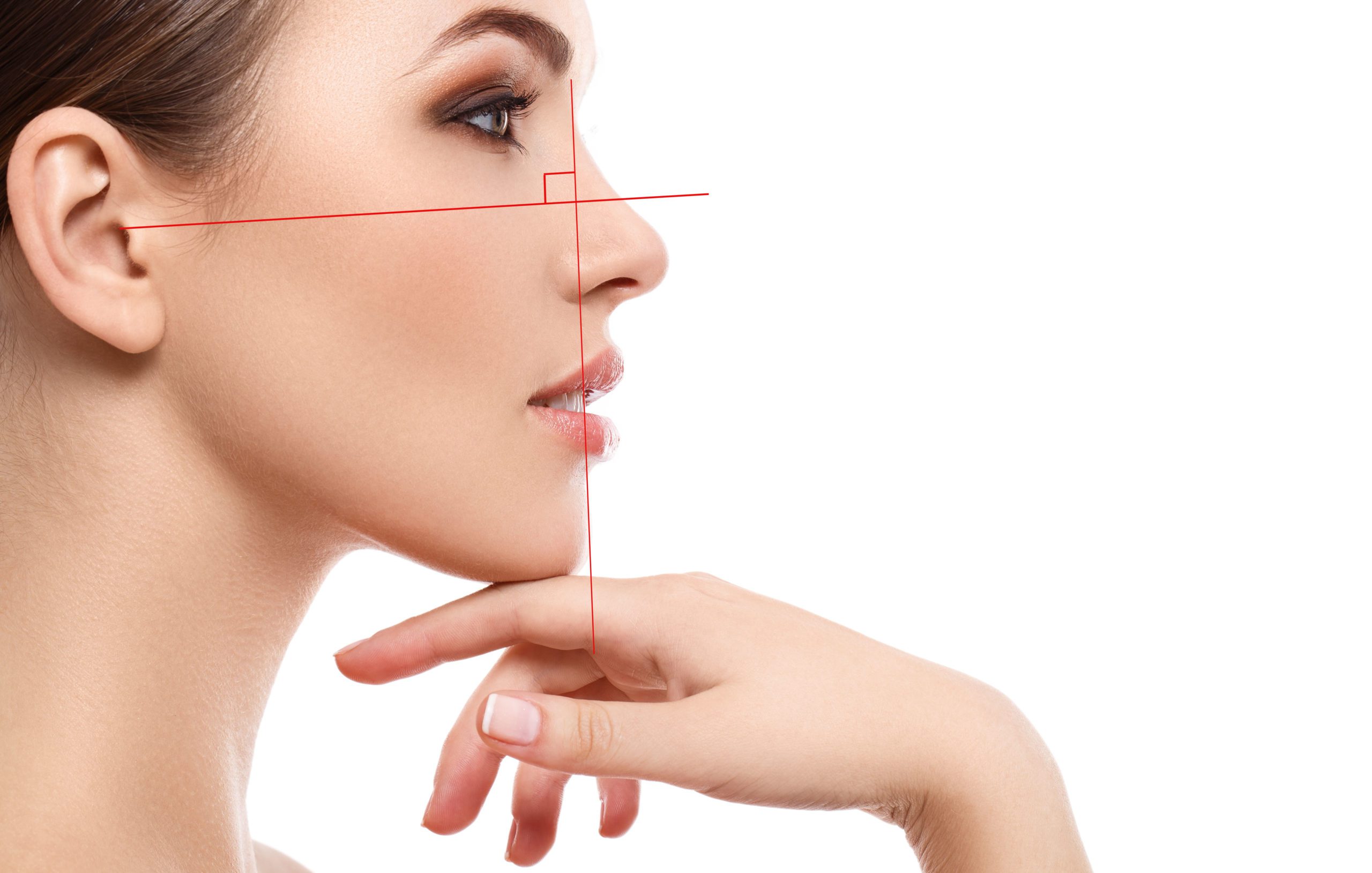
On profile view, the most anterior point of an ideal chin should be at or approach a vertical line (Zero Meridian of Gonzalez-Ulloa) that runs through the root of the nose and is perpendicular to a horizontal line that runs through the inferior orbital rim and superior limit of the ear canal (Frankfort horizontal line).
What are the advantages and disadvantages of chin/neck liposuction compared to alternative non-surgical treatment options?
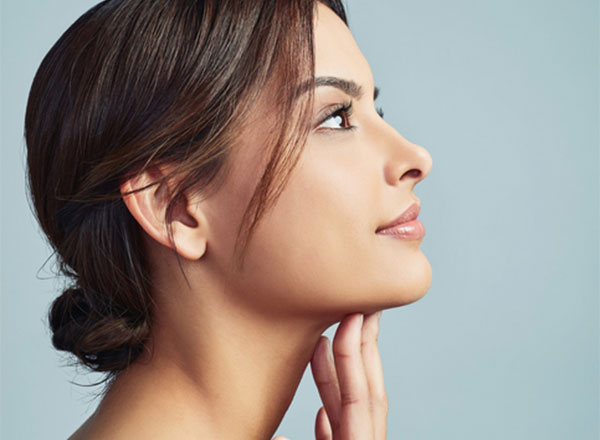
Submental liposuction is the definitive treatment option for removing excess fat below the chin and along the upper neck. In contrast to non-surgical neck contouring options such as Kybella® and Coolsculpting®, a chin/neck yields more drastic results and often achieves results with one single treatment. Therefore, this procedure may be considered advantageous from a cost benefit analysis. Kybella® and Coolsculpting® are appealing non-surgical treatment options as they are less invasive and involve less risks and downtime compared to surgery. Dr. Ho is experienced in both chin/neck surgery and Kybella® injections and will discuss with each patient the best treatment options that meet their aesthetic concerns and goals.
What Is Kybella?
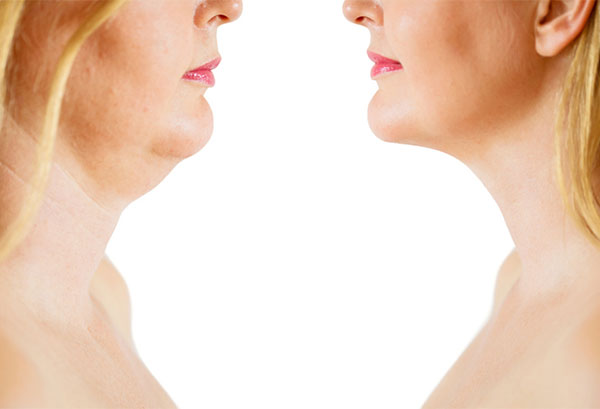
Kybella® is an FDA-approved injection procedure indicated for the reduction of moderate to severe submental fat (the area of fat below the chin). This injection can be performed alone or may be utilized as an adjunct procedure in jawline contouring that contributes to creating a more defined jawline on profile view. A series of three treatments or more are typically required before achieving noticeable results. Kybella® can be considered to have a permanent effect, as the active ingredient deoxycholic acid is a bile acid that breaks down and destroys fat cells. Dr. Ho is experienced in Kybella® injections and will discuss with each patient the best treatment options that meet their aesthetic concerns and goals. To find out more about the neck lift in Philadelphia and your many neck contouring options, contact our office today. During your consultation, you can discuss the price, recovery, preparation, and the details of the procedure.
Book Now

